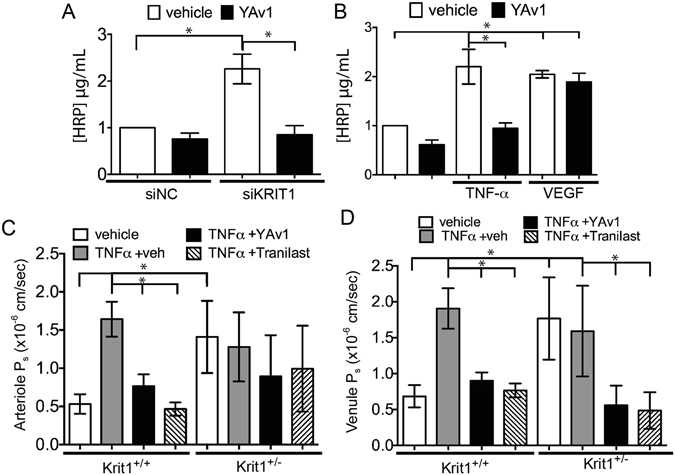Figure 5.

Increased permeability in KRIT1 deficient cells and animals can be reversed by N-(E)-p-coumaroyl-3- hydroxyanthranilic acid. (A) HRP leak through HPAEC monolayers transfected with negative control (NC)- or KRIT1-siRNA +/− 100 µM YAv1. Data shown are the mean HRP concentration, +/−SEM; n = 4. p < 0.001 by ANOVA; *p < 0.05 by Tukey’s post-hoc test. (B) HRP leak through HPAEC monolayers treated with 25 ng/ml TNF-α or recombinant human VEGF (50 ng/ml) +/− 100 µM YAv1. Data shown are the mean HRP concentration, +/− SEM; n = 4. p < 0.001 by ANOVA; *p < 0.05 by Tukey’s post-hoc test. (C) and (D) Cremaster arteriole (C) and venule (D) permeability in wild type (Krit1+/+) or heterozygous (Krit1+/−) mice treated with TNF-α + vehicle, TNF-α + YAv1, or TNF-α + Tranilast. Data shown are the mean Ps +/− SEM. n = 9 vessel sites; p = 0.0002 by non-parametric ANOVA; *p < 0.05 by Dunn’s post-hoc test.
